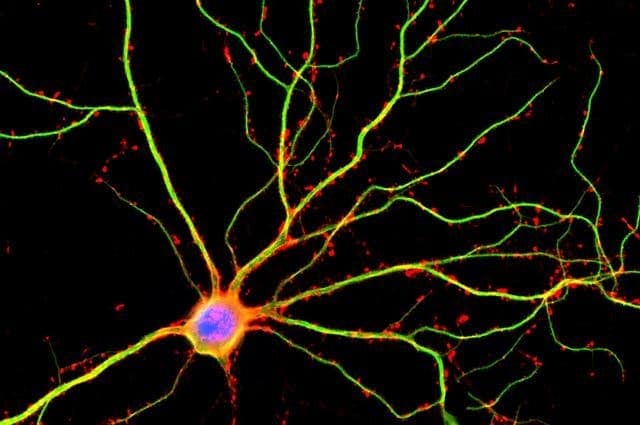A breakthrough study found the human brain is at least 10 times more active than previously thought after a team from UCLA proved dendrites are actually electrically active. Since dendrites make up to 90 percent of the brain’s volume, computational capacity might actually be 100 times greater than the most hopeful estimates. Yet again, science shows that the tangled mess of billions of neurons we house upstairs is of unrivaled complexity — and that we’re still scratching the surface.

What is consciousness? Where does it stem from? Can you create artificial consciousness? These are the ultimate questions neuroscience hopes to one day answer and a recent paper published by a team from the University of California, Los Angeles, is bringing us one step closer by revisiting the basic building block of any brain: the neuron. This tree-like cell is made up of two key regions: the body, also known as the soma, and the dendrites, which are large extensions that look a lot like branches.
Not a conductor but a generator in its own right
Up until now, scientists used to think dendrites only had the modest role of passing down electrical signals received through synapses, which are neural junctions, through the soma. These electrical signals are transmitted by other somas, which were through to be the sole electrical current generators. But UCLA neurophysicist Mayank Mehta and colleagues showed there is much more to it.
Previously, some groups suggested that dendrites aren’t passive at all and that dendrites could also generate electrical pulses based on studies of brain slices. Observing the same effect in nature, however, is far more revealing. It’s also extremely challenging considering the delicate nature of dendrites. For instance, previous attempts to measure electrical activity in dendrites only managed to destroy the cells. The UCLA team managed to get around this issue by developing a new technique in which electrodes are placed near, and not in, the dendrites of live rodents.
Using this novel approach, dendrite electrical activity was measured for four days in rats that were allowed to move freely around a maze. The electrodes were positioned such that dendrite activity would be recorded from the posterior parietal cortex which is where movement is coordinated.
Much to everyone’s surprise, the researchers recorded five times as many electrical spikes in dendrites than in somas when the rats were sleeping and up to 10 times as much when these were actively exploring the maze. And because dendrites are almost 100 times larger in volume this could mean the brain’s computational capacity is 100 times greater. Previously, estimates suggested the human brain is 30 times faster than the best supercomputer and simulating 1 second of brain activity requires 82,944 processors. It might actually take a conventional computer much more than that to come close to human computational raw power.
There’s much more to it.
Somas fire electricity in short bursts known as somatic spikes. These spikes are binary all-or-nothing events with little variation in voltage. As such, somas seem to be shuttle information binary much like transistors in digital computers operate which is why you’ll see many scientists refer to the human brain as some binary computing machine. The study, however, shows that dendrites not only generate similar electrical bursts to the somas, they also generate large currents of varying voltage that could be even bigger than the spikes themselves.
“We found that dendrites are hybrids that do both analog and digital computations, which are therefore fundamentally different from purely digital computers, but somewhat similar to quantum computers that are analog,” said Mehta, a UCLA professor of physics and astronomy, of neurology and of neurobiology. “
Because of their singular nature, somas were thought to be the primary way through which perception, learning, and memory formation occur. This long-held belief is now toppled by these most recent findings which not only show that there’s more than one decision maker but the brain is far from binary too.
“Many prior models assume that learning occurs when the cell bodies of two neurons are active at the same time,” said Jason Moore, a UCLA postdoctoral researcher and the study’s first author. “Our findings indicate that learning may take place when the input neuron is active at the same time that a dendrite is active — and it could be that different parts of dendrites will be active at different times, which would suggest a lot more flexibility in how learning can occur within a single neuron.”
Due to technical limitations, neuroscience has mostly focused on the cell’s body thus far. Thanks to more sensitive and clever methods, we’re beginning to explore uncharted territories in the human brain and the secret lives of neurons. Now that our understanding of how neurons compute has changed, other fields will follow from medicine (diagnostic) to computers to artificial intelligence.


